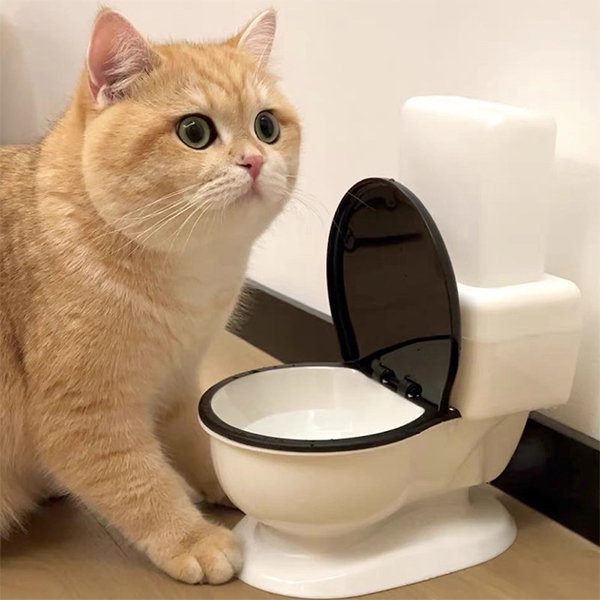We have found this article relating to Can You Flush Cat Poo or Litter Down the Toilet? listed below on the net and thought it made sense to discuss it with you on this page.

Intro
As feline owners, it's essential to bear in mind exactly how we deal with our feline good friends' waste. While it may appear practical to purge feline poop down the commode, this method can have destructive repercussions for both the environment and human health and wellness.
Ecological Impact
Purging feline poop presents damaging virus and parasites right into the water system, posturing a considerable threat to marine communities. These impurities can negatively affect aquatic life and compromise water quality.
Health and wellness Risks
Along with ecological issues, flushing feline waste can likewise posture wellness dangers to people. Feline feces might consist of Toxoplasma gondii, a bloodsucker that can create toxoplasmosis-- a possibly extreme illness, specifically for expecting females and individuals with weakened body immune systems.
Alternatives to Flushing
Thankfully, there are more secure and much more responsible means to get rid of pet cat poop. Think about the adhering to options:
1. Scoop and Dispose in Trash
One of the most common approach of getting rid of pet cat poop is to scoop it into a naturally degradable bag and toss it in the trash. Make sure to make use of a dedicated trash inside story and dispose of the waste quickly.
2. Use Biodegradable Litter
Select eco-friendly pet cat clutter made from products such as corn or wheat. These clutters are eco-friendly and can be securely disposed of in the trash.
3. Hide in the Yard
If you have a yard, think about hiding cat waste in a marked area far from veggie gardens and water resources. Make sure to dig deep sufficient to prevent contamination of groundwater.
4. Mount a Pet Waste Disposal System
Invest in a pet dog waste disposal system especially designed for feline waste. These systems use enzymes to break down the waste, decreasing odor and ecological impact.
Conclusion
Responsible family pet possession expands beyond supplying food and sanctuary-- it additionally entails correct waste management. By refraining from flushing cat poop down the toilet and opting for alternative disposal methods, we can minimize our ecological impact and shield human wellness.
Why Can’t I Flush Cat Poop?
It Spreads a Parasite
Cats are frequently infected with a parasite called toxoplasma gondii. The parasite causes an infection called toxoplasmosis. It is usually harmless to cats. The parasite only uses cat poop as a host for its eggs. Otherwise, the cat’s immune system usually keeps the infection at low enough levels to maintain its own health. But it does not stop the develop of eggs. These eggs are tiny and surprisingly tough. They may survive for a year before they begin to grow. But that’s the problem.
Our wastewater system is not designed to deal with toxoplasmosis eggs. Instead, most eggs will flush from your toilet into sewers and wastewater management plants. After the sewage is treated for many other harmful things in it, it is typically released into local rivers, lakes, or oceans. Here, the toxoplasmosis eggs can find new hosts, including starfish, crabs, otters, and many other wildlife. For many, this is a significant risk to their health. Toxoplasmosis can also end up infecting water sources that are important for agriculture, which means our deer, pigs, and sheep can get infected too.
Is There Risk to Humans?
There can be a risk to human life from flushing cat poop down the toilet. If you do so, the parasites from your cat’s poop can end up in shellfish, game animals, or livestock. If this meat is then served raw or undercooked, the people who eat it can get sick.
In fact, according to the CDC, 40 million people in the United States are infected with toxoplasma gondii. They get it from exposure to infected seafood, or from some kind of cat poop contamination, like drinking from a stream that is contaminated or touching anything that has come into contact with cat poop. That includes just cleaning a cat litter box.
Most people who get infected with these parasites will not develop any symptoms. However, for pregnant women or for those with compromised immune systems, the parasite can cause severe health problems.
How to Handle Cat Poop
The best way to handle cat poop is actually to clean the box more often. The eggs that the parasite sheds will not become active until one to five days after the cat poops. That means that if you clean daily, you’re much less likely to come into direct contact with infectious eggs.
That said, always dispose of cat poop in the garbage and not down the toilet. Wash your hands before and after you clean the litter box, and bring the bag of poop right outside to your garbage bins.
https://trenchlesssolutionsusa.com/why-cant-i-flush-cat-poop/

Do you appreciate more info about Don’t flush cat feces down the toilet? Place feedback further down. We will be interested to hear your suggestions about this post. In hopes that you come back again before long. Sharing is good. You won't know, you may very well be doing someone a favor. Thanks a lot for your time. Kindly come by our website back soon.
Free Estimates
Comments on “Hazards of Flushing Cat Poop Down Your Toilet - Avoid Possible Issues”